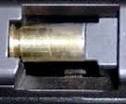I worked with quite a few FBI agents looking for a couple of robbery suspects and one incident that sticks in my mind was an agent that only had 3 rounds of oo buck for his 870 because the rest of his ammo was buried under his softball equipment in the trunk of his government vehicle. Most agents working at the FBI have no need for sidearms because they sit behind a desk and never leave the office. Everytime I was in their office no one that I saw was armed. I'll bet that all of the FBI agents combined fired less than 100 rounds last year in firefights.
20 years ago I went through the FBI's firearms instructors course that lasted a week. We were watching the so called expert show us how to shoot slugs at a full size b-27 target at 50's with an older 870 which had a 20" plain barrel with the bead on the barrel. After 5 shots, all of which missed the target, he looked dumbfounded as to why he missed. I suggetsed that he aim at the belt buckle and he hit the target all 5 times. Anyone that had used one of the older guns knew to shoot at the belt buckle because they shot high which is why Remington added a small ramp. This guy was their expert and he was a boob.
The agent teaching the class told us that the FBI used to let them have as much ammo as they wanted until someone he worked with was caught selling ammo and was given some jail time.
I am sure that somewhere in the FBI there are units that need to be armed but most don't for their everyday tasks.
DESK BOUND COMMANDOS:
Every Agency has them. They usually have the newest equipment and vehicles while the "Street Troops" make do with what comes down from Headquarters when the "Administrators" receive new issue.


